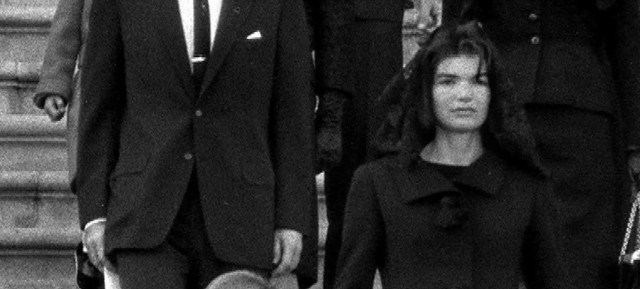
Staff Writer
Photographs reveal a glamorous president with wispy hair and a cool composure. Young Americans gather from family photos of his beautiful wife and two young children that this president brought energy into the White House.
Many young Americans think of President John F. Kennedy as a charismatic and handsome historical figure. But those who were alive during Kennedy’s presidency remember his life and death as an integral part of America’s grand narrative, a narrative too complex to encapsulate in pictures. Fifty years later, they have not forgotten Nov. 22, 1963.
Dr. J. Mark Long, professor in the Baylor Interdisciplinary Core, was in a seventh grade Social Studies class when he heard the news that the president had been assassinated. He recalls his teacher’s reaction vividly.
“She was laughing and crying at the same time,” Long said. “She asked, ‘I know that you’re not allowed to have gum here at school, but if one of you has a piece of gum, can I have some?’ Almost every hand in the class room went up. She stood there chewing gum, and she could hardly speak.”
Dr. David Hendon, professor of history, heard the news when he was a junior in high school. He was in an advanced geometry class when word got around, he said.
“I went across the hall and told my young English teacher what happened, and she said, ‘I just knew they were going to get him,’” Hendon said.
His teacher’s response, Hendon said, was due to her awareness that parts of Dallas venomously disliked the liberal president.
“Everybody was shocked and depressed,” Hendon said. He said he heard of some cases where people expressed joy at Kennedy’s death, but sentiments of such nature were not apparent at his school.
Only a fourth-grader at the time, Dr. Michael Parrish, professor of history, still recalls what the weather was like that fateful Friday.
“It was a cold but very sunny day in late November,” he said. “Of course, fourth graders were excited about Friday and getting out of school and going home for the weekend.”
Parrish said class was interrupted by the principal, who called the teacher into the hallway and told her what had happened. The teacher came back into the room crying and delivered the news to the class.
“Most of us just sat in shock trying to understand what our teacher had said,” Parrish said. “One of my classmates, a boy, screamed out, ‘I’m glad they shot him!’”
Parrish said the whole class, including the teacher, was horrified at this student’s proclamation. He didn’t understand why anyone would be glad that a young, energetic and inspirational president had been shot, he said.
Long, Hendon and Parrish all remember being glued to the television for several days after Kennedy’s assassination.
Hendon said part of reason everyone remembers Kennedy’s death today is because it was the first big national tragedy to be televised.
“When the funeral came, I was watching,” Long said. “The solute that little John-John rendered to his father, and the funeral procession — this montage of images comes back to me. Those images are fixed. They won’t go away.”
The turbulent decade that followed Kennedy’s death was rife with conflict. In 1968, Martin Luther King Jr. and Robert F. Kennedy were both assassinated.
“I had such a sense of chaos,” Long said. “The backdrop of the ’60s — the race riots that occurred across nation, the larger social upheaval that involved women’s rights and the agony of the Vietnam War — for those of us who were younger, the prophets we turned to were our rock musicians. There was a doors song, ‘This is the End,’ and it seemed to capture what we were experiencing in the ’60s.”
Parrish said Kennedy was a casualty of the Cold War, the rivalry between the U.S and the Soviet Union. Tensions from the Cold War continued to affect the landscape of American politics, Parrish said, until the 80s. Kennedy’s assassination signified the beginning of that process.
Good also came out of that era, Hendon said, which is important for Americans to remember.
“Appreciate the good things that came out of that era for black people, for women, for young people,” Hendon said. “People don’t realize how much things change. It’s a good thing to know — because we can do it again some time.”
Parrish said people should consider Kennedy’s death within a broader context. Thinking about the bigger picture, Parrish said, sheds light on what Kennedy’s death means for Americans today.
“As a result, students are better able to put themselves in the broad scheme of life, to put themselves in a place, in a time that includes the past, the present and the future,” Parrish said.
Testaments from these three professors are univocal: Kennedy’s assassination was a devastating event in American history. America’s leader had fallen, his life cut short at 42. Despite the hollowness that he said he initially felt, Long later found a hopeful ending to Kennedy’s story.
“I recall so well in 1962 when he gave his address at Rice stadium,” Long said. “He said by the end of decade, we’ll put a man on the moon. Almost seven years later, I watched the television as we landed on the moon and Armstrong spoke those memorable words. I went out into the backyard. I looked up, I could see the moon. I stood there transfixed, thinking, ‘We’re there. We are there right now.’”



